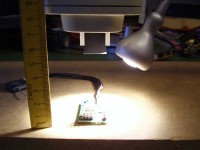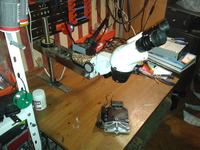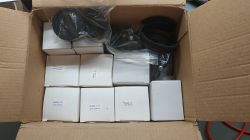bachin wrote:
Why don't electronic ones fit and what are better optical ones?
It's a bit like comparing the Ford T to the new Mercedes

The gap in favor of the optical stereo microscope is huge. There is also nothing to compare with some magnifying glass or glasses.
In principle, this will be admitted by every person who had the opportunity to work on an optical microscope, if you have not had such an opportunity, it is difficult to even imagine.
In the thread I gave above, if you read from the beginning, you will see because there was a discussion about electronic vs optical. In a way, it was created as a microscope review written by a friend
@tomybb , however, over time it has developed quite strongly and raises various issues related to microscopes and available accessories for these microscopes.
bachin wrote: I would love to read what major disadvantages optical microscopes have, apart from the price.
This can be more related to electronic ones, in principle, their only advantage is the price ;)
To tell the truth, I do not see any disadvantages, and compared to the electronic one, it has only advantages. Even the price can hardly be considered a disadvantage because the price-performance ratio is very good and better IMHO better than in the case of an electronic one. Another thing, even if you want to look for defects, here you have to take into account the specific configuration of such an optical microscope, i.e. what glasses, whether there are barlow lenses, etc. For example, for people wearing glasses, it should be equipped with other rubber shells put on the microscope glasses ...
Among other things, the above-mentioned reasons do not suit me, and if I want to have an electronic one, I fire up the monitor and I also have an image on the screen

However, I hardly use this functionality due to the "so-so" camera.
Now why I don't like the electronic one the most:
- Lack of 3D and difficult to assess the real distance of, for example, a soldering iron from the element, so it's harder to coordinate hand movements with what you see. Of course, everything can be learned and practiced, but it is very unnatural.
- The camera has limited dynamics, so sometimes it is difficult to set it so that the solders that reflect the light are not overexposed, and other elements are visible at the same time, i.e. properly illuminated. To sum up, the optics offer incomparably better quality of the image we see.
In principle, it is impossible to describe or show it on the forum because the photo already introduces the above distortions ...
Now why did I buy optical... actually also because I'm older and my eyesight is not the same. I decided that it's a shame to continue to destroy your eyes by working with magnifying glasses or staring at the monitor.
As for work, maybe a friend
@slavo666 he will come back and add something more to what he presented in the movies...
I can be biased because when I tell me any work due to the difficulty of coordination of movements and poor camera dynamics made the work more difficult than easier.
 ) spend 2k on a microscope so I'm looking for something cheaper.
) spend 2k on a microscope so I'm looking for something cheaper.







